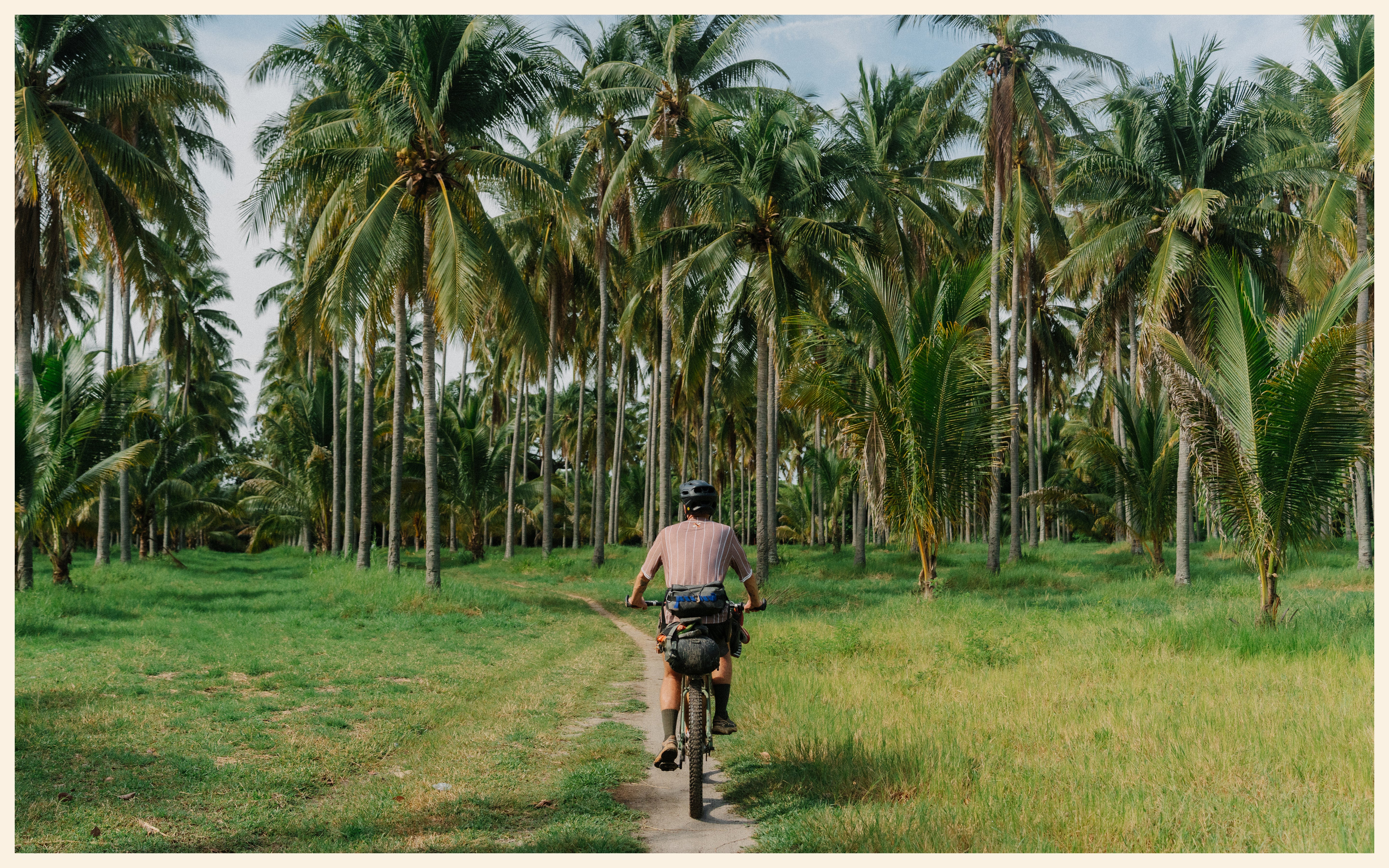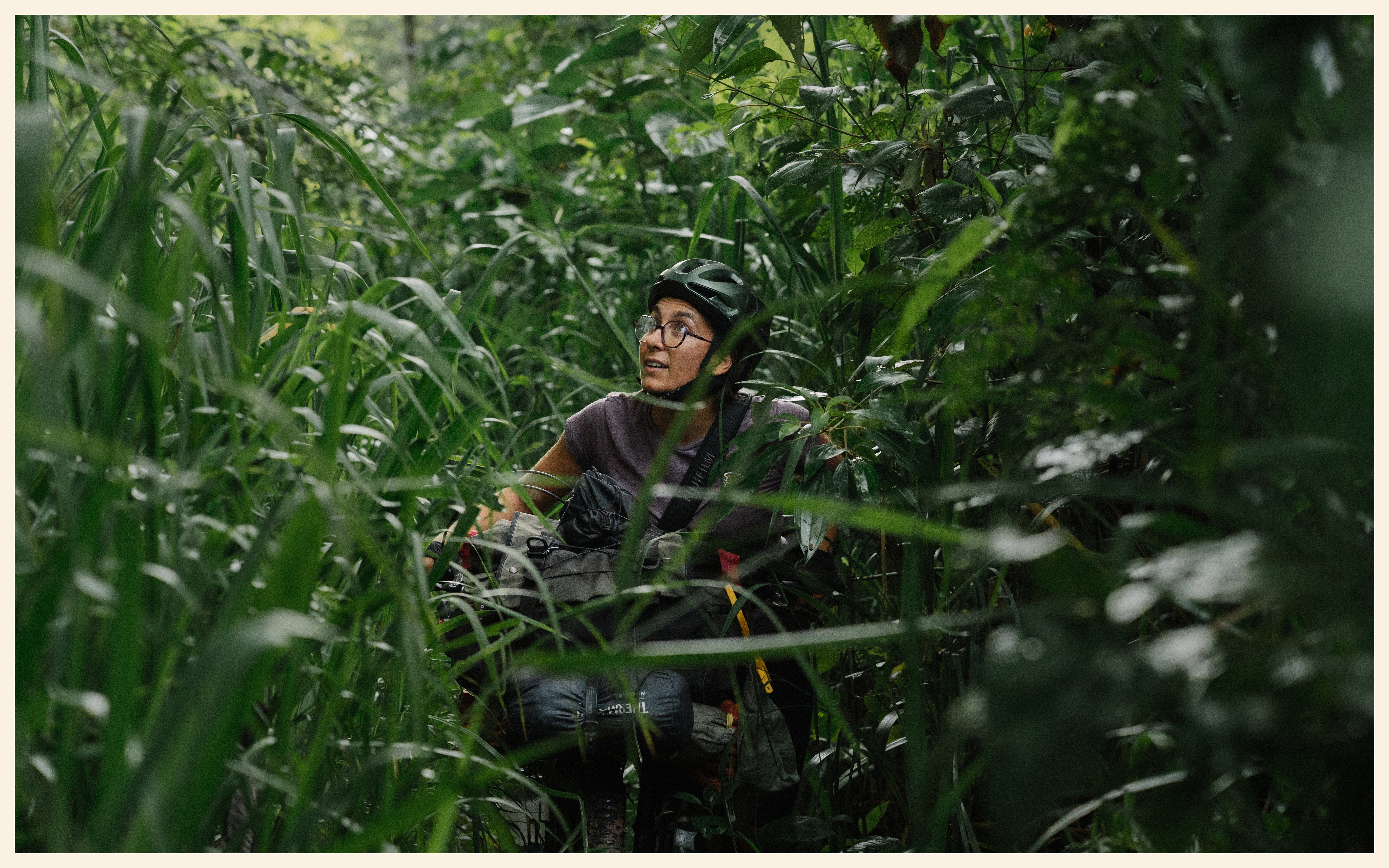Canada to Tierra del Fuego: Featured Riders Julien and Marie-Liesse
Tumbleweed ambassadors Julien and Marie-Liesse left Paris to cycle off-road from Canada to Argentina, embracing a slower way of travel. Under the name Fast Won’t Last, they share stories of landscapes, encounters, and everyday life on the road through words, photos, and podcasts. For them, cycling is a way to see better by going slower.


Tell us about your most recent itinerary: where did you start, where did you finish, and how did you choose the route you took on your last expedition?
A year ago, we set off on an extraordinary journey: riding our bikes all the way from Canada to Tierra del Fuego, at the southern tip of the Americas. This is our very first bike trip, and we’re proud to have taken on such a huge challenge!
 Before dreaming of crossing the Americas, we had long imagined leaving our hometown, Paris, and cycling all the way to Asia powered only by our legs. Unfortunately, due to current conflicts, we decided to put that adventure on hold, saving it for better days…
Before dreaming of crossing the Americas, we had long imagined leaving our hometown, Paris, and cycling all the way to Asia powered only by our legs. Unfortunately, due to current conflicts, we decided to put that adventure on hold, saving it for better days…
In the meantime, we decided to cross a continent we only knew through tourism. We wanted to see what lies beyond the glitter of the United States and to meet the people of Central and South America.

When it comes to choosing our routes, we almost exclusively rely on Bikepacking.com, a platform that gathers some of the world’s most demanding and breathtaking itineraries. These routes are exactly what we’re looking for: off-road trails that take us far away from busy highways and right into the heart of wild, untouched landscapes.
Our top three favorite destinations have one thing in common: they are remote and difficult to access.
 At the top of the list is our journey through Baja California: a unique mix of arid, desert, and mountainous regions. Next is the journey through the mountains of Chiapas (Mexico): intense days pushing our bikes through riverbeds and up steep trails.
At the top of the list is our journey through Baja California: a unique mix of arid, desert, and mountainous regions. Next is the journey through the mountains of Chiapas (Mexico): intense days pushing our bikes through riverbeds and up steep trails.
Finally, the Trans-Salvador: a route we created for Bikepacking.com. As demanding as it is splendid, it connects the high plateaus and the Pacific coast over nearly 15 days, revealing unexpected corners of the country.
You're both riding Tumbleweed Prospectors: can you tell us more about how the bikes have performed for you?
Our days are spent both riding and pushing our bikes, whether up steep climbs or across tricky terrain. We spent two months in Baja California on the legendary Baja Divide. Because of the extremely sandy conditions, we had to switch to 3-inch tires to avoid pushing our bikes more than necessary.


The most important thing is the confidence we have in our bikes. They are incredibly sturdy (let's be honest, they've already been through a number of falls!). Thanks to this, we don't hesitate to take them on steep and sometimes very technical roads.
We've even ridden in Utah's canyons, on trails normally reserved for full-suspension mountain bikes. It's a real pleasure to push the limits with them!
What we loved most was how our bikes adapted to our pace and our route choices—rather than the other way around. Thanks to their wide clearance, we had no trouble fitting these larger tires and when we drive in mud, we don't need to clean our tires every 200 meters to keep moving forward.
Once back on the Mexican mainland, we could easily switch to narrower tires, better suited for the new terrain.
The Rohloff hub has also been a game changer in the world of bikepacking, and we’re lucky enough to be among the few travelers riding with one. No more searching for bike shops every 300 kilometers to fix a cassette or adjust a chain! Even with our limited mechanical skills, we can take care of basic maintenance ourselves (oil changes and cleaning). For us, it truly feels like a miracle—and above all, it takes away a huge mental load on such a long journey.
What inspired this particular trip?
Julien was living in Medellín, Colombia for work at the time. One afternoon, during a training ride, he spotted a cyclist up ahead loaded with huge panniers, dusty and full of stories. Curious, he sped up, caught him, and struck up a conversation. A few words later came the invitation: “Come stay at my place.”


What was meant to be a brief encounter turned into several days together, swapping tales of adventure and dreaming bigger with each pedal stroke.
As soon as they parted ways, Julien called Marie-Liesse. In his voice, there was a spark: what if we set off too?
That moment, on a Colombian road, was when the idea for their big cycling journey first began to take shape.
Have there been any detours, encounters, or unexpected surprises along the way?
On the road, we’re lucky enough to meet people almost every day. But the ones that truly stay with us are those who open our eyes to new passions and ways of life.
We think fondly of Buddy, in the U.S., who introduced us to fly fishing, or Omar in Mexico, thanks to whom Julien discovered lobster fishing on the Pacific Coast.



And then there’s Greg, a meeting that left a lasting impression. This American in his sixties hosted us during our time in Colorado. One conversation led to another, and before we knew it, he was inviting us to meet him 200 km further down the road for five days of kayaking on Lake Powell. We didn’t hesitate for a second.
What still moves us today is his boundless generosity. Greg offered us this trip as a gift. He organized everything, prepared the food for all three of us, and made sure we only had one job: to fully enjoy the adventure.



That’s how we ended up spending almost a week on the water, far from everything. Few people, lots of silence. Surrounded by red canyons, the calls of coyotes, and vultures circling above our heads, we experienced a suspended moment outside of time.
Tell us about your racks, bags, and packing setup. How did you organize your gear, and was there any equipment that made a difference on a daily basis?
We started the trip with a Tailfin pannier system on the rear, a Rockgeist frame bag (for Julien), and a handlebar bag from the Parisian brand Copra, which is exclusively handmade. Then, despite the fact that we loved our rear setup, it couldn't withstand the rough terrain. So we switched to Tumbleweed racks, to which we attached Sea-to-Summit dry bags. Since then, we've had no problems to report!



In terms of weight, we tried to balance our bikes to carry a similar weight, and the distribution of our bags is quite comparable:
Marie-Liesse's Bike:
- Front bag (COPRA, custom-made): electronics and rain gear
- Frame bag (COPRA, custom-made): food
- Food Pouch (Chaak): water bottle and toiletries
- Rear dry bag (Sea to Summit): clothing
Julien’s Bike:
- Front bag (COPRA, custom-made): technical equipment + electronics
- Frame bag (RockGeist x Tumbleweed): food
- Food Pouch (Chaak): two water bottles
- Rear dry bag (Sea to Summit): clothing
We’ve learned and understood a lot on the road, especially about our gear. After a year of traveling, one thing is clear: in desert and sandy areas, we’ll never use zippered bags again.


The Baja California crossing, for example, was particularly tough. Sand gets everywhere and eventually damages the equipment. If we had to do it again, we would choose roll-top closures for all our bags.
Apart from this, we are extremely happy with the bags we currently use: sturdy, practical, and perfectly suited to our adventure!
Perhaps when we reach colder and more remote areas where we will need to carry more food and water, we may need to add two small panniers to the rear.
If you want to know all the details about the equipment we are carrying, please visit the setup page on our website. Everything is listed there, down to the last gram!


What advice would you give to bikepackers dreaming of a similar trip?
It’s our turn now to encourage you to go out and seek your own adventure. Whether it’s a weekend bike trip or a long-distance journey, every experience is unique and precious.


Don’t be afraid of doing things “wrong” or not perfectly. The first time out, you’ll make mistakes, improvise, and find yourself in situations you never imagined. And that’s the magic of travel: those surprises are what shape you, teach you, and slowly turn you into a better adventurer.
How can our audience find you online and follow your next adventure?
For even more adventures, photos, and stories, join us on Instagram @fastwontlast.cc or visit our website Fast Won’t Last. We also have a YouTube channel (@fastwontlastbikepacking) where we try to post some videos.
And for our French-speaking friends: as a bonus, we also host an immersive podcast that takes you right inside our panniers!











